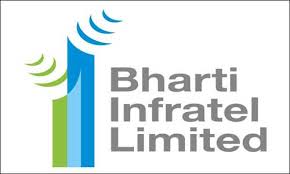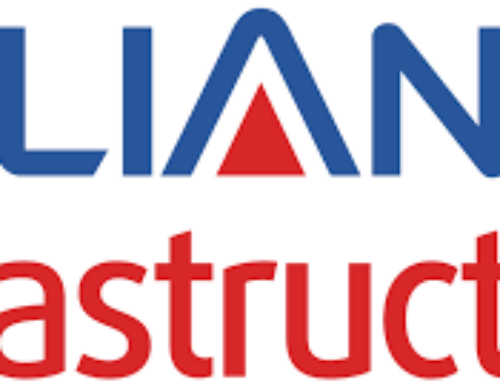Industry Overview :
Telecommunication services are one of the fundamental driving forces for the socio-economic development of a nation. Mobile telephony has seen a staggering growth in the past ten years. However, it has been witnessing a slowdown in recent years. Driven by data explosion and rollout of data services (3G and 4G) along with operational prudence, the Indian telecom market is expected to be back on the growth track.
With increasing market competitiveness, the current focus of the telecom operators in India has moved from expanding the subscriber base to improving the ‘active user base. Moreover, telecom operators are emphasizing operational prudence more than ever.
Three key aspects would continue to fuel the growth of tower companies:
- Strong focus on operational excellence
- Data explosion
- Potential in rural areas to add subscribers to the ‘active user base
Data Usage Landscape in India
India had come a long way from 2001 when there were only about 7 million Internet users to become the second-largest market in the world for Facebook and LinkedIn and the third country to have over five internet companies valued at over $1 billion. India added 43 million internet users (20.5% CAGR) from October 2013 to September 2014. Total internet users crossed 254 million in September 2014. Out of these, 235 million users accessed the internet through mobile devices. The growth in internet users was seen in rural and urban parts of India.
The current smartphone penetration in India stands at 13.4%, up from 10% in 2014. As per the study conducted by Deloitte across 25 countries, data explosion takes a new dimension once the smartphone penetration exceeds 25%. Data-hungry applications and on-demand services primarily drive this. India will likely follow the global trend and will see tremendous data growth at 30% smartphone penetration with even more adoption of data-hungry applications/services on mobile devices.
As telecom operators are focusing on increasing market penetration with limited capital expenditure, it is favorable for them to lease towers from tower companies, reducing costs considerably and allowing them to focus on core marketing activities. In addition, leasing towers from tower companies also enables new telecom operators to roll out services in record times.
Current Landscape
There are nearly 400,000 telecom towers in India at present and are estimated to increase at a CAGR of 3% over the next 4-5 years. The decline in the growth of voice usage along with industry developments and regulations in India have raised concerns about the evolution of independent tower businesses, thereby affecting their cash flows and debt repayments. However, exploding data traffic leads to in-building solutions and smaller cell sites and is expected to drive the growth of the Indian tower industry in the future.
As early movers, Indian tower companies have become global industry leaders with many towers under management.
CRISIL Research expects tower additions to remain low over the next five years as there are adequate towers at present. Emphasis would shift to improving tenancies (which are below optimum levels) on existing towers in the medium term. BTS additions are expected to be strong, particularly with operators launching and/or expanding their 3G and 4G service offerings.
Company Overview: Part of Bharti Group, the company is in the business of acquiring, set-up, building, and Operating telecommunications towers and related Infrastructure. The company was incorporated in 2006 as Bharti Infratel. It is one of the largest Telecom Infrastructure companies all over the world. As India is going through the telecommunications revolution, demand for towers is increasing. Indus Towers is the world’s largest tower company providing it to the Industry.
The company has over 38,642 standalone towers across 18 states and 11 telecom circles in India. On a consolidated basis, Indus tower is one of the largest tower infrastructure providers in India, based on the number of towers that the company owns and operates and the number of towers owned or operated by Indus Towers Limited – a Joint Venture between Bharti Infratel, Vodafone India and Aditya Birla Telecom, represented by Bharti Infratel’s 42% equity interest in Indus.
SHAREHOLDING BSE Data
Financials and Ratios [table id=29 /]
Future Prospects: As the penetration of smartphones in India is increasing, the demand for data is also growing. Indus Tower’s leader in the segment enjoys some plus as customers always demand. Play there is always business from one customer. That is Bharti Airtel. Even though there is a big challenge from Reliance Jio, Infratel is a big plus for the company.
India is at the cusp of the data revolution, and the demand is expected to grow with the exhaustion of data capacity. Even if the CRISIL report indicates less need for a tower, the entry of big players like Brookfield and others indicates growth in the sector. Bharti Infratel has placed better than any other company. Sale figures for the 4G smartphone showed that we might need to develop it very soon. As the digital India initiative develops, new customer segments like Govt are expected to emerge.
The entry of Jio may start consolidation in operators. At that time, a company holding a big chunk of the market is a big plus.
Infratel is giving us one opportunity. This business is run by Private Equity firms of REIT forms in the offshore market. In India, it is developed by one of India’s largest telecom companies. Generally, the segment is less risky and makes a constant flow of Cash. That is why many people call them an innovative modern asset in REIT.
The company is Professionally managed and has an increasing Dividend. So it is an excellent chance to invest in it.
The biggest problem in front of the company is the financials of Vodafone idea.




